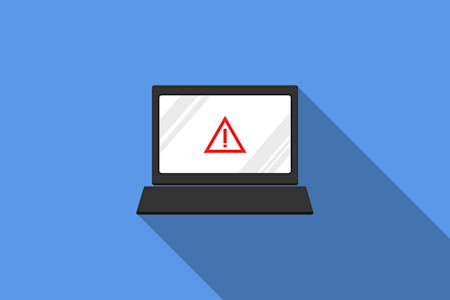No system or application has impenetrable security, although they aspire to it; there is always the chance of a new vulnerability being discovered. Each solution or application comes with its own risks and vulnerabilities that IT teams and organizations must address, but not all risks are equally critical. As such, vulnerability prioritization and assessment are key.
Prioritizing vulnerabilities helps organizations focus on the most critical security risks and properly allocate their IT resources. This keeps their systems and apps safe while improving their overall security posture. With that in mind, let’s explore vulnerability prioritization, why it matters, and how vulnerability prioritization technology helps IT teams efficiently protect their network.
What Is Vulnerability Prioritization?
Vulnerability prioritization is the process of evaluating security vulnerabilities, identifying the most critical threats, and ranking them to identify which need to be addressed first.
Vulnerabilities are typically prioritized based on the risks they present, their exploitability, and the importance of the assets at risk. This utilizes data like CVSS scores, threat intelligence, and business context to determine which threats are the most critical, so IT teams can quickly address the most pressing issues.
Why Vulnerability Prioritization Is Critical for Cybersecurity
Vulnerability prioritization is an essential part of cybersecurity, as it ensures IT teams address the most critical vulnerabilities quickly. Prioritization helps organizations allocate their IT resources efficiently and address the highest risks promptly, which improves their overall security posture and risk management.
IT teams can only address so many vulnerabilities at once. If multiple vulnerabilities are detected, knowing which ones to address first can make the difference between a secure system and a catastrophic data breach.
For example, suppose there’s a vulnerability that can cause minor hiccups for internal users. In that case, it should still be addressed eventually, but it is a significantly lower priority than a critical vulnerability that could lead to a malware attack and large service disruptions.
Vulnerability prioritization ensures that, while both vulnerabilities are addressed eventually, the more severe threats are handled promptly.
Critical Elements to Consider When Prioritizing Vulnerabilities
With that in mind, the next question is: how do you prioritize vulnerabilities? There are several elements to consider when setting your priorities, so consider these factors:
Asset value: First, consider the assets the vulnerability puts at risk. If it impacts a critical application, then it may be a higher-priority vulnerability to address. However, if it only impacts an application that’s in a test environment or a tool that doesn’t connect to important data, it may be a lower priority.
Exploitability: Just because a vulnerability exists doesn’t mean it can be easily exploited. Many require an “exploit code” that may not be publicly available or a certain configuration setting. Others, however, can be exploited remotely with relative ease and should be addressed quickly. Assessing exploitability can help IT teams prioritize vulnerabilities, as a vulnerability that’s difficult to exploit may be a lower priority.
Business impact: Consider the severity of the vulnerability and its worst-case scenario. Vulnerabilities that can lead to data breaches, malware attacks, or compromise critical systems should be prioritized, as they can cause irreparable damage.
Remediation: It’s also helpful to consider how much time and effort are required to remediate a vulnerability. For instance, if a vulnerability can be fixed with a quick patch installation, then there’s little point in putting it off until later. This can help reduce the overall number of threats a business faces while still allowing IT teams to focus on high-priority threats.
5 Essential Steps for Prioritizing Vulnerabilities
Although there are several factors to consider when prioritizing vulnerabilities, the process can be broken down into five simple but essential steps. Following these will help ensure an efficient and effective prioritization process:
1. Evaluating the Severity of Vulnerabilities
First, determine the severity of each vulnerability and its potential risks. This can be done using the Common Vulnerability Scoring System (CVSS) framework, assessing the tools available for exploiting the vulnerability, and determining the access and privileges an attacker would gain through it. Determining the most severe vulnerabilities will help prioritize which ones need to be addressed first.
2. Address or Mitigate Critical Vulnerabilities
Once you know which vulnerabilities are the most critical, you should address the highest priority ones immediately. This can often be done by installing patches, and a good patch management solution can make this even easier by automatically installing, testing, and deploying patches across an organization’s endpoints. If a patch isn’t available, you can use alternative mitigation strategies, such as restricting access or implementing network segmentation, until one is released.
3. Establish Defined Timelines for Vulnerability Remediation
Even if a vulnerability is low-priority, it shouldn’t be indefinitely ignored. Setting a vulnerability remediation timeline helps ensure every vulnerability gets addressed, which helps your organization maintain regulatory compliance and improve its overall security posture.
4. Ensure Compliance with Regulatory Requirements
Different industries have their own security requirements that they must adhere to, such as PCI, GDPR, or HIPAA compliance. These typically have strict requirements for addressing vulnerabilities and installing patch updates, so it’s important to keep remediation timelines in alignment with these requirements. Failing to meet IT compliance standards not only leaves networks and devices at risk but can lead to legal risks, monetary penalties, and a loss of trust, so staying compliant is a must.
5. Review and Adjust Your Vulnerability Prioritization Strategy
Your vulnerability prioritization strategy won’t be perfect the first time around, and probably not the second or third times either. Constantly reviewing your strategy and adjusting to better align with your business objectives and critical assets is key, as it helps improve efficiency and security. Tools like patch automation solutions, automated vulnerability scanning, and other IT automation tools can help quickly identify vulnerabilities and roll out patches, helping keep your process efficient while you fine-tune your strategy over time.
Why Prioritizing Vulnerabilities Can Be Complex
While prioritizing vulnerabilities may sound easy in theory, several factors can make it more complicated. While these challenges and pitfalls can make it difficult to prioritize properly, understanding what obstacles await can make them easier to overcome.
Common challenges include:
Over-prioritizing: Sometimes a vulnerability isn’t as big a risk as it appears. Putting too much priority on a vulnerability that will actually have a minimal impact can be a mistake that pushes back the time it takes to address more critical risks.
Neglecting less visible threats: A vulnerability may be small or hard to find, but that doesn’t make it any less of a threat. Neglecting less visible but more dangerous risks can be a big mistake with severe consequences.
Limited resources: IT teams often lack the time, personnel, and budget they need to address every vulnerability. Organizations should ensure their IT teams have the resources they need to address vulnerabilities promptly and effectively.
Ever-evolving threats: Cyber threats are always changing, which is why cybersecurity is constantly adapting to meet them. Keeping up with the latest in threat intelligence and managing priorities is key to ensuring proper security, but can also be an ongoing challenge.
False positives/negatives: Sometimes security scans or assessments can make mistakes and identify vulnerabilities that don’t exist, or completely miss those that do. False positives can lead to wasted time and resources, while false negatives can leave vulnerabilities exposed. As such, using a powerful, effective solution to identify threats and conducting thorough vulnerability assessments is vital.
Optimal Approaches to Prioritizing Vulnerability Remediation
Given the challenges in vulnerability prioritization and remediation, the question remains: what’s the best approach to prioritization? Fortunately, there are best practices IT teams can follow to effectively and efficiently prioritize and address vulnerabilities.
Vulnerability prioritization best practices include:
Use scoring systems: You don’t need to determine the threat each vulnerability presents from scratch. You can create a scoring system that utilizes data from sources like CVSS to understand the risk and severity each vulnerability creates.
Focus on risks: Consider the risk each vulnerability presents to your organization, including how sensitive the data at risk is, the impact it can have on key systems, and how likely it is to be exploited. This can help you identify the most critical threats.
Assess the impact: How will a vulnerability affect your business? Assessing the impact can help you prioritize vulnerabilities that impact key systems and business functions.
Streamline patch management: A streamlined, automated patch management process can help ensure swift and timely remediation. Using a solution like Splashtop AEM makes it easy to detect, test, and deploy patches across a business environment without needing IT teams to manually update each device.
Continuous monitoring: Continuous monitoring is important for identifying new risks and vulnerabilities as they emerge. Using threat intelligence solutions can help identify active and emerging exploits, so you can update your prioritization strategy based on new threats.
Regular assessments: Conducting regular vulnerability assessments can help you identify new threats quickly. This helps ensure that whenever a new vulnerability appears, you’ll be able to find it, determine its impact, and prioritize accordingly.
How Can Patches Be Deployed Effectively Based on Vulnerability Prioritization?
Now let’s consider the patching process. Good patching is vital to keeping devices and networks protected, as security patches can close vulnerabilities before they’re exploited and improve your overall security posture. So, how can vulnerability prioritization help with your patch deployment?
A good vulnerability management solution with automated patch management can quickly identify threats and deploy patches across endpoints. Even automated patch deployment can take time, so incorporating vulnerability prioritization helps determine the most important patches to deploy. At the same time, patch automation tools can automatically detect when a new patch is available, test it, and roll it out to devices, making patch deployment fast and painless.
By combining vulnerability prioritization and patch management, IT teams can automatically deploy the most critical patches as quickly as possible, while scheduling and rolling out lower-priority patches within a healthy timeframe. This reduces the window of exposure for potential threats while lightening the burden on IT teams, thus keeping security strong and freeing up resources.
Proactively Prioritize and Remediate Vulnerabilities with Splashtop AEM
Prompt patching and vulnerability prioritization are both essential for proper security, and fortunately, there are solutions like Splashtop AEM (Autonomous Endpoint Management) that can simplify patch deployment and vulnerability detection/remediation.
Splashtop AEM uses real-time visibility, automated patch management (including testing and deployment), and remote commands to help IT teams direct, prioritize, and remediate vulnerabilities.
Splashtop AEM enables organizations to customize and enforce policies across endpoints, maintaining high security standards and IT compliance. Its proactive alerts and AI-powered CVE insights can quickly identify risks, assess their impact, and prioritize the biggest threats to address. Then, it can address the threats with automated fixes via Smart Actions and automated patch updates across operating systems and third-party apps.
Splashtop AEM gives IT teams the tools and technology they need to monitor endpoints, proactively address issues, and reduce their workloads. This includes:
Automated patching for OS, third-party, and custom apps.
AI-powered CVE-based vulnerability insights.
Alerts and remediation to automatically resolve issues before they become problems.
Background actions to access tools like task managers and device managers without interrupting users.
Customizable policy frameworks that can be enforced throughout your network.
Hardware and software inventory tracking and management across all endpoints.
Ready to bring the security, automation, and ease of use of Splashtop AEM to your business? Get started today with a free trial.





